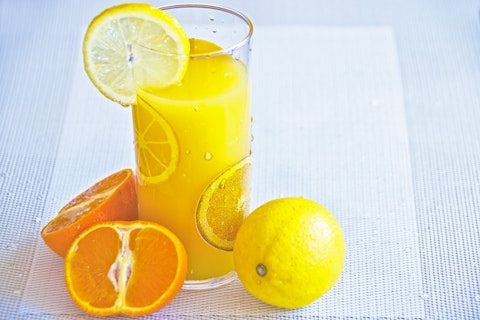If you can’t imagine the life without refreshing soft drinks, this list of 7 countries that produce the most juice in the world might be of some interest to you. After all, you might want to know where your bottle or a pack of juice came from because there’s a high probability it comes from one of the following countries. Unless you’ve bought a home product and you don’t live in one of the leading juice producer countries, of course.

Ververidis Vasilis/Shutterstock.com
Fresh, natural juice can contain a wide range of minerals and vitamins required by our body. Grape or apple juice, for instance, contain an abundance of iron. Speaking of iron don’t forget to check our recent list of 8 countries that produce the most iron in the world as well. Although it is about the production of raw iron ore, not the mineral our body needs, it is also interesting to know which countries produce the highest quantities of a given commodity. You can even compare the two lists and see how many countries end up on both of them. Being a major producer of two such different commodities is a clear indicator of a healthy economy.
Data for this list of 7 countries that produce the most juice in the world has been pulled from the United States Department of Agriculture report, page 7. We would have loved to bring you more juice categories, but orange juice, as you can clearly see, is the only one available. One of the reasons for that is the fact that it is also the most widespread type of all juices. It doesn’t matter if it’s concentrated or single strength juice – they all count on our list. Concentrated juices are usually juice blends in frozen concentrated form, while single strength juices are either NFC (not from concentrate) standardized juices or ones made from concentrate by diluting it with water. In any case, we have gone with all types of orange juices. Finally, note that all data is expressed in metric tons at 65 degrees brix. That equals to 344.8 gallons at 42 degrees brix or 1,392.6 gallons at single strength equivalent. Furthermore, all data is for 2015/16 year. Let us now start with the countdown.
7. Turkey
Total production: 8,500 metric tons
Turkey produces 8,500 metric tons of orange juice and earns the seventh spot on this list. The country that spans Europe and Asia is also the world’s eighth largest producer of oranges with close to 1.8 million metric tons.

6. Australia
Total production: 9,000 metric tons
Australia doesn’t count among biggest orange producers and takes the 28th position with only 400,000 metric tons. However, Australia produces 9,000 metric tons of orange juice regardless.

5. China
Total production: 46,000 metric tons
Contrary to what one might think, China doesn’t produce the most juice in the world. China produces 46,000 metric tons of this refreshing drink and 7.3 million metric tons of oranges which earn it the third spot in this category.

4. South Africa
Total production: 47,000 metric tons
South Africa produced 47,000 metric tons for 2015/16 which is the first time they produced more than China. South Africa also produces close to 1.7 million metric tons of oranges making it the world’s tenth largest producer of this good.

3. Mexico
Total production: 127,000 metric tons
Mexico is world’s fifth biggest orange producing country with close to 4.5 million metric tons annually. It also produces 127,000 metric tons of orange juice, which is why it ranked third on this list.

2.The United States
Total production: 329,000 metric tons
Thanks to Florida plantation, the United States count as world’s second biggest producer of both oranges and orange juice. The US produces around 7.5 million metric tons of oranges and 329,000 metric tons of juice. 90% of the US-produced orange juice ends up being consumed domestically.

1. Brazil
Total production: 1,092,000 metric tons
Finally, number one spot on this list of 7 countries that produce the most juice in the world belongs to Brazil. Brazil produces three times the amount of juice United States make which comes to more than 1 million metric tons. Brazil also produces by far the most oranges in the world with production amounting to 17.5 million metric tons. However, unlike the US, 99% of Brazil’s orange juice ends up exported.

